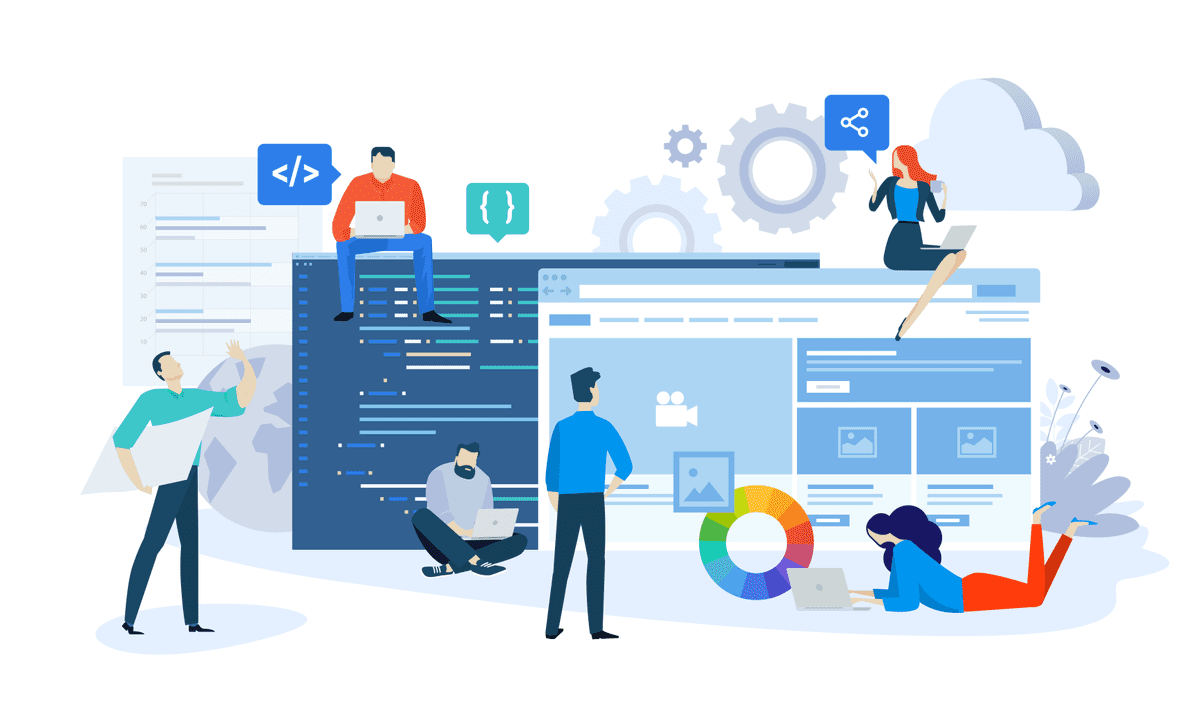What Makes Up a Web Development Project?
February 06, 2024

Think about some routine aspects of everyday life, such as preparing food, seeing a doctor, using rideshare transportation, staying in touch with friends, or shopping. Wouldn’t you agree that the way we access these today quite often involves the internet? Thus, demand is growing for skilled web developers as we rely more and more on web applications to power our everyday lives.
Web developers work on teams to build and maintain web applications. A web development project is collaborative work among a group of developers to create an application that solves a real-world problem.
As a web developer, you will do the following:
Create products that users interact with to do things like get information, make purchases, and socialize.
Follow a specific web development process to build these products. This process begins with identifying the problem and solution, and progresses through intentional steps until the product can be released and maintained. By adhering to a well-defined development process, the team ensures that they deliver an optimized product.
Between coming up with the next big idea and telling the world about it, there is extensive planning and many steps.
A typical web development process contains the following steps:
Identify the problem: Research is conducted to determine how the application will solve a problem for the intended audience, who are typically called end users.
Plan and gather requirements: The budget and resource needs are determined.
Design: Details and requirements for the application are documented in a planning template.
Develop: Coding begins! And coding continues.
Test: Testing is an essential part of the development process to ensure that the application runs correctly. Issues are documented and fixed, and the application is tested iteratively until it reaches an agreed upon standard for the public.
Deploy: The application is published and made available to the end users. Additional tests can be done during this stage to ensure that there are minimal errors when it is released.
Maintain: Like with any other product, maintenance is a large part of the software development process. Developers run tests and write code to improve performance and other features, and monitor customer feedback for issues and suggestions.
There are several software development methodologies that shape the process of undertaking a web development project. The following two models are the most common:
Waterfall: In this model, all requirements are collected and then each step is completed sequentially, one at a time. This model is better suited to smaller projects.
Agile: In this model, the project is broken down into small components which are built on an incremental basis. Feedback and testing are continually part of the process to improve and deliver an application that functions well and solves the problem.
Due to its increasing popularity, you will follow the agile development process during the boot camp. There will be many opportunities to learn more about agile during the prework and throughout boot camp. For now, it’s important to understand that it is essential to follow an intentional, detailed process for a web development project in order to successfully build and release a working product.
Every project starts with visualizing what “done” looks like for your project, which must always tie back to solving a real-world problem. By enrolling in this boot camp, you are already well on your way to building and collaborating on projects that could improve many aspects of our everyday lives!
This page was updated 6 months ago
© 2022 edX Boot Camps LLC. Confidential and Proprietary. All Rights Reserved.
Category: web development
Tagged under: developer habits, web development, collaboration, web development process, web development methodologies,
All Posts
- OpenAI Account Setup Guide
- NodeJS Installation Guide
- PostgreSQL Reference Guide
- GitHub Copilot Guide
- PostgreSQL Installation Guide
- Deploy with Render and PostgreSQL
- API Resources
- Render Deployment Guide
- Deploying a MERN Stack Application to Render
- Deploy with Render and MongoDB Atlas
- The Science and Research Behind Our Unconventional Educational Approach
- What Makes Up a Web Development Project?
- Localhost Loopback Issues Troubleshooting Guide
- Video Submission Guide
- A Growth Mindset for Life
- Web Literacy
- Developer Resources
- Introduction to Computer Structure and Organization
- MySQL Installation Guide
- HTML Cheatsheet
- Advanced Computer Skills
- Introduction to Computer Skills
- How to Use API Keys
- How to Install MongoDB
- MySQL Reference Guide
- Heroku Deployment Guide
- Getting Started with Git
- Using the GraphQL Playground in a MERN application
- Professional README Guide
- Regular Expression Tutorial
- How to Install the Heroku CLI
- How to Install NodeJS
- Deploy with Heroku and MySQL
- Deploy with Heroku and MongoDB Atlas
- Set Up MongoDB Atlas